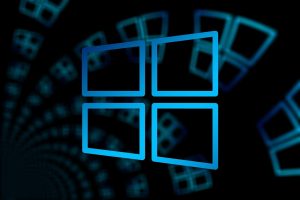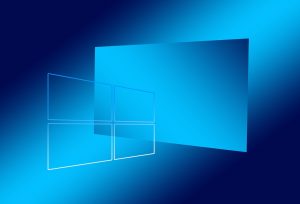Security and Privacy Concerns with Modern Operating Systems

Here is a 5955 word English essay on security and privacy concerns with modern operating systems:
Introduction
Operating systems are at the core of computers, laptops, smartphones and other smart devices that we increasingly rely on for communication, work, banking and more. The massive adoption of technology in everyday life has led to valid concerns regarding security and privacy vulnerabilities in modern operating systems. In this essay, I explore the major security and privacy risks posed by today’s mainstream OSes as well as steps users and companies can take to better protect themselves.
Security Threats in Consumer OSes
For home users, Microsoft Windows running on most PCs along with Apple’s iOS and macOS powering iPhones and Macs are the dominant choices. However, these popular consumer operating systems are prime targets for cybercriminals and nation-state hackers. Some key threats include:
Malware Attacks
Viruses, spyware, ransomware, botnets, keyloggers and other malicious software are pervasive on the Windows landscape. Criminals frequently discover and exploit vulnerabilities in Windows to spread malware that steals financial information, records passwords, encrypts files for ransom and more. macOS and iOS have stronger security architectures and see fewer malware incidents. However, cyberattacks targeting Apple users are increasing as those platforms grow in usage.
Phishing Scams
Phishing uses email, ads or fake websites to trick users into downloading malicious files or revealing login credentials and sensitive personal data. Social engineering tactics manipulate unwitting users into compromising their own security. Operating systems and web browsers attempt to block known phishing sites but new ones constantly emerge. Users remain vulnerable despite OS safeguards.
Network Intrusions
Hackers can penetrate home networks and devices through security flaws in routers, smart appliances and even operating systems. Once inside the network perimeter, intruders can steal data, spread infections to connected devices and compromise home systems. Poorly configured networks allow criminals access via open ports, default passwords and exploits in OS network services.
Supply Chain Attacks
Software supply chain attacks insert malware or vulnerabilities during development, updates or distribution before operation systems reach users’ devices. This allows cybercriminals to infiltrate popular OSes like Windows or iOS as part of standard software updates trusted by users. Supply chain attacks enabled by lax vendors undermine even the most secure operating systems.
Privacy Issues in Mainstream OSes
In addition to external threats, the very design of proprietary operating systems raises privacy concerns regarding user data harvesting:
Data Collection and Profiling
Mainstream OS companies like Microsoft and Apple absorb vast amounts of usage data from their installed base of home users and businesses. Telemetry data helps improve their products but also facilitates surveillance capitalism via extensive user profiling and targeted advertising. This data collection occurs by default with users given little ability to limit it.
Location Tracking
Mobile operating systems like iOS and Android notify apps about users’ geographic locations by default. While useful for maps and local search, persistent location tracking across apps enables comprehensive monitoring of user movements over time. Turning off this capability for every app is extremely burdensome for average users.
Chat/Voice Monitoring
Digital assistants like Siri and Cortana analyze voice data to understand commands. Some speech recognition occurs on remote servers, expanding the scope for privacy abuse through always-on microphones. Similarly, smartphone keyboards may log messaged text “to improve suggestions”. Continuous voice and text capture facilitates wide-scale surveillance.
Biometric Data Storage
Biometrics like face and fingerprint scanning offer convenient authentication for modern devices. However, biometric data points stored on smartphones and computers are highly sensitive. Local storage risks theft by hackers. Centralized databases create “one password to rule them all” with iris scans or fingerprints becoming irrevocable if compromised.
Hidden Commercial Exploitation
Proprietary operating systems represent black boxes to home consumers regarding internal workings. Hidden clauses in complex terms of service enable extensive user data exploitation for profit that customers are unaware of and unable to consent to in a meaningful way. Opaque commercial data practices erode privacy.
Enterprise Operating System Security
For enterprise use, operating systems require even more stringent security to protect against sophisticated cyber threats like industrial espionage, ransomware and infrastructure attacks. Common OS platforms in business contexts include:
– Windows Server – Microsoft’s server-optimized OS with Active Directory integration widely used for internal apps and services.
– Linux – Open source server OS with high configurability and security. Used for web hosting, databases, automation, DevOps and more.
– macOS – For media production, graphics, and technical roles. Secured via MDM profiles.
– Unix – Legacy but reliable and proven server OS deployed on mission-critical systems. Hardened over decades of patching.
– Mainframe OS – Unisys, IBM, etc. Legacy systems powering critical financial and governmental apps. Highly customized capabilities and security integrations.
Enterprise OS Security Best Practices
IT teams help mitigate operating system vulnerabilities through various methods including:
– Hardened system configurations with strict security policies, minimal open ports/services, principle of least privilege, and regular patching.
– Endpoint security via centrally managed antivirus, firewalls, IDS/IPS monitoring, and remoteSlicehosting.
– Network segmentation, access controls and monitoring to restrict lateral movement between systems and contain breaches.
– Custom application whitelisting and sandboxing to isolate untrusted processes and permit only approved programs.
– Multi-factor authentication across all administrative and remote access channels. Avoid single password reliance.
– Frequent backups on isolated media to enable quick recovery from ransomware.
– Employee security training to spot social engineering attempts like phishing emails.
– Controlling removable media and limiting physical access to critical servers.
Ensuring operating system security is an ongoing process requiring constant vigilance against evolving threats.
Privacy Risks in the Enterprise
Unlike consumer OSes, business-oriented systems prioritize data security over excessive data collection. However, privacy concerns still exist:
– Closely monitor telemetry and other user data flowing to vendors like Microsoft through enterprise operating systems and cloud services. Limit when feasible.
– Analyze privacy policies from OS and software vendors. Negotiate enterprise agreements instead of passive consumer consent to data practices.
– Assess privacy risks before integrating emerging technologies like biometric authentication or IoT monitoring which collect sensitive corporate information.
– Use security tools like data loss prevention to control unauthorized communication of confidential data outside the organization, including via OS-level channels.
– Reassess bring-your-own-device policies which can allow OS-level personal data leakage between employee devices and company resources accessed through them.
Moving Forward
There are steps both individual users and organizations can take to enhance privacy and security in operating systems:
– For consumers, minimize risky activities on primary devices and instead use a secured separate computer for sensitive tasks like online payments.
– Learn how to configure OS and app-level privacy settings to limit data sharing. Avoid using services that demand excessive access permissions.
– Enterprises should develop layered data security plans not reliant on just endpoint OS security. This includes workforce training, network monitoring, access controls and data encryption.
– For mission-critical systems, use air-gapped computers disconnected from all networks and running specially secured operating systems.
– Advocate for stronger privacy laws and regulations on OS vendors to limit unnecessary data collection and clearly communicate with users.
The fundamental challenge is balancing operating system security, functionality and privacy in an environment of pervasive cyber threats. Operating systems must evolve to provide robust security while enabling innovation and preserving user trust through ethically managed data practices. With growing OS adoption, these issues impact everyone.
Conclusion
Modern operating systems deliver convenience but also expose users to serious security and privacy risks from both cybercriminals and at times the platform vendors themselves. However, through greater awareness of OS threats along with proper precautions and pressure on tech companies to prioritize user interests, individuals and businesses can better protect themselves and advocate for a more secure future. Going forward, operating system security and privacy protections must be top priorities during design and deployment to maintain trust in these essential platforms.








